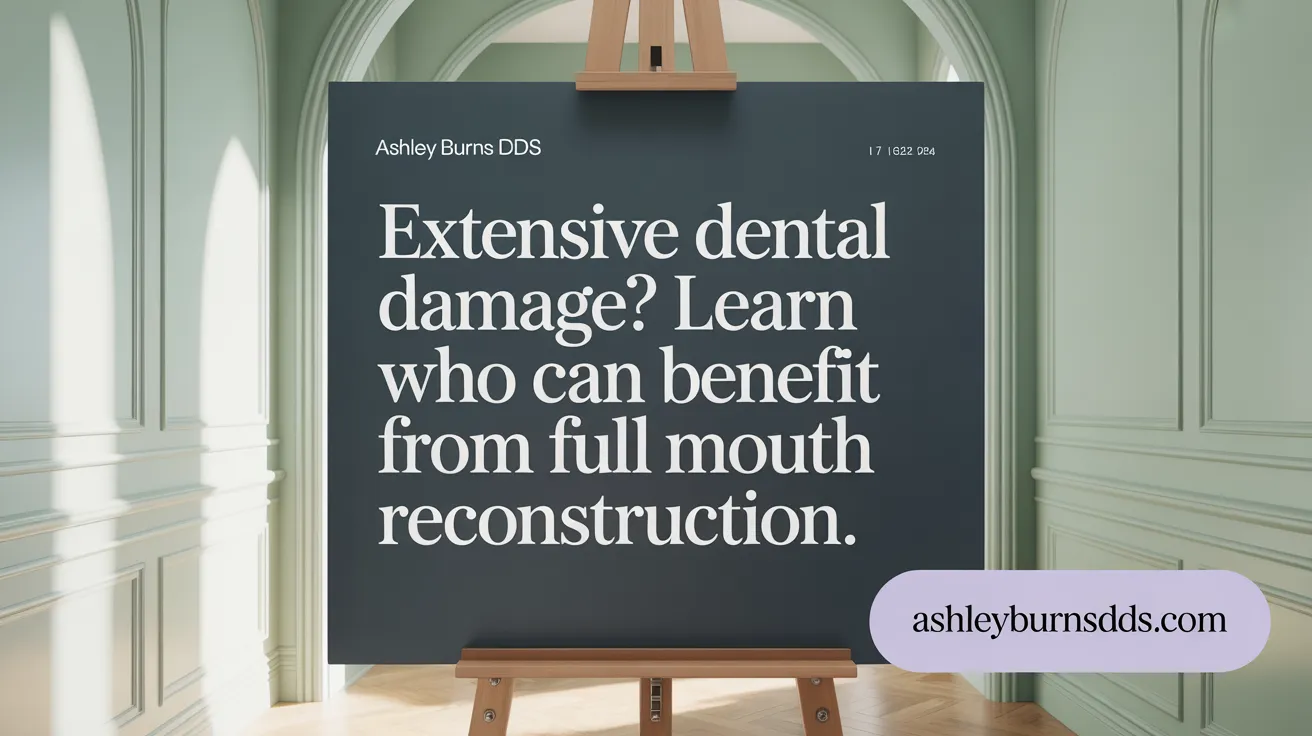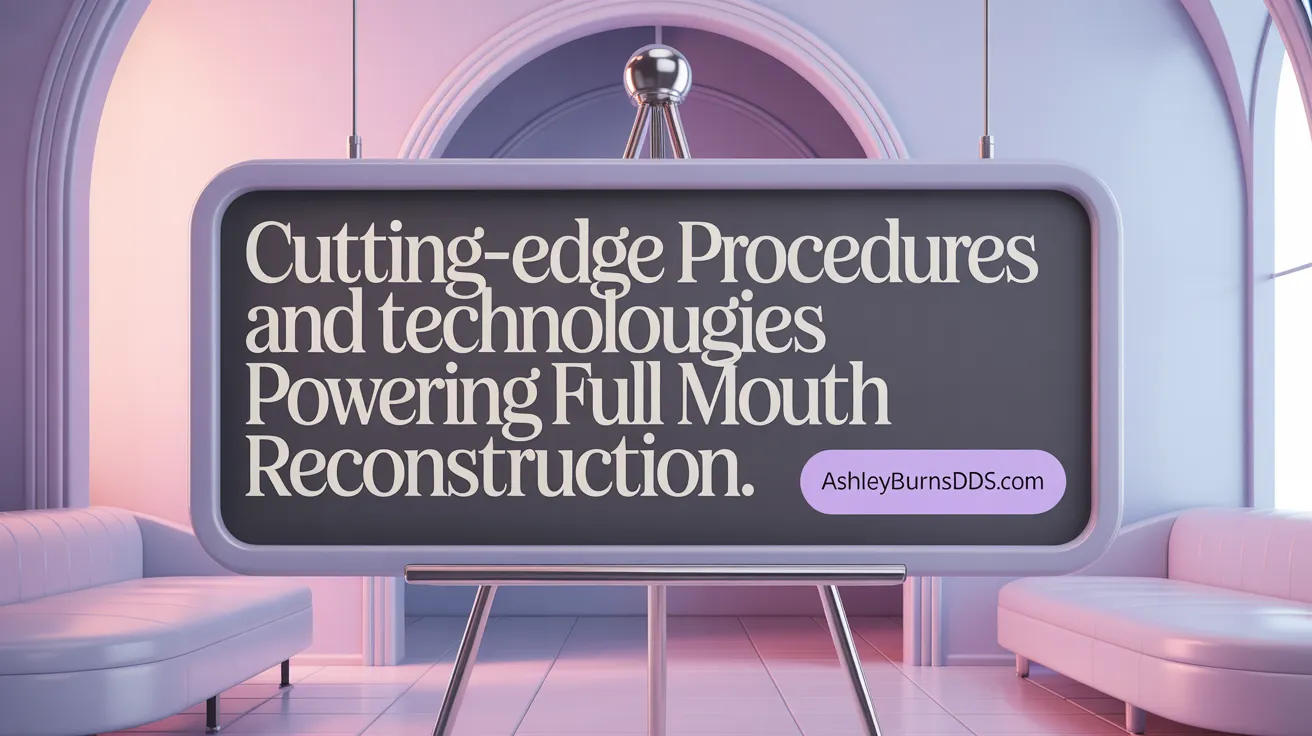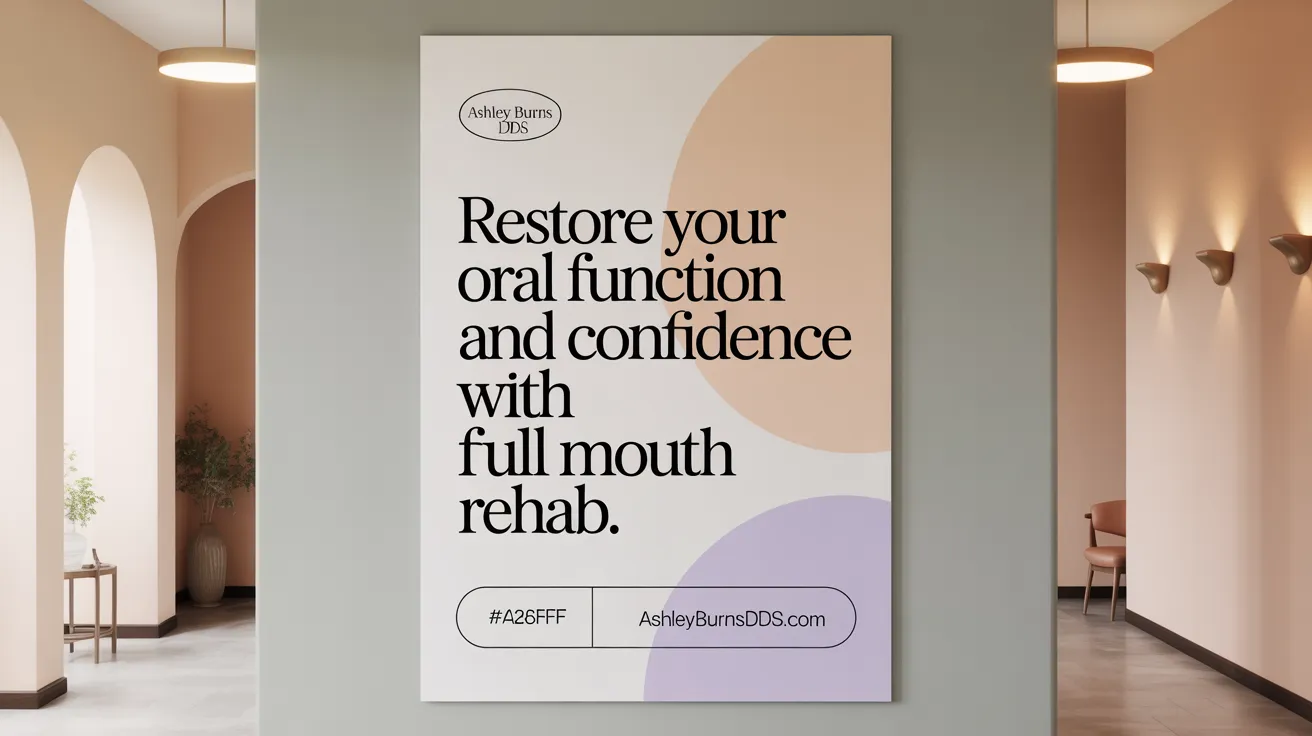Understanding Full Mouth Rehabilitation: An Overview
What is Full Mouth Rehabilitation?
Full mouth rehabilitation, also known as full mouth reconstruction, is a comprehensive dental treatment designed to restore both the health and aesthetics of the entire mouth. It addresses a wide range of dental concerns that can affect teeth, gums, jaw alignment, and oral function.
Primary Goals
The main objectives of this treatment approach are to restore proper oral function such as chewing, speaking, and biting, while also improving the smile's appearance. Enhancing long-term oral health and preventing future complications are key priorities.
Common Dental Issues Addressed
This extensive rehabilitation is suitable for patients facing multiple dental issues such as:
- Severely worn or damaged teeth
- Multiple missing teeth
- Advanced gum disease
- Bite misalignment and TMJ disorders
- Cosmetic imperfections like discoloration, chips, and gaps
Typical Procedures Involved
Full mouth rehabilitation incorporates various dental treatments customized to meet individual needs. Common procedures include:
- Dental implants: titanium posts replacing missing teeth for stability
- Crowns and bridges: restoring damaged or missing teeth
- Veneers: cosmetic shells covering the front surface of teeth
- Orthodontics: aligning teeth before restorative work
- Periodontal therapy: treating gum disease
- Root canals and tooth extractions as needed
Together, these procedures rebuild oral health and function while providing a natural and attractive smile.
Who Needs Full Mouth Rehabilitation and Why?

Typical candidates for full mouth rehabilitation
Candidates for full mouth rehabilitation often face extensive dental challenges. These include severely worn, damaged, or missing teeth that impair essential functions such as chewing, speaking, and smiling. People with advanced tooth decay, chronic gum disease, extensive tooth loss, bite misalignment, trauma-induced damage, or genetic conditions like Ectodermal Dysplasia and Dentinogenesis Imperfecta are typical candidates. Additionally, individuals suffering from symptoms related to temporomandibular joint disorders (TMJD) or significant bite and jaw pain may also require this comprehensive treatment.
Conditions warranting full mouth reconstruction
Full mouth rehabilitation is indicated when multiple dental issues combine to affect oral health and function. These issues include widespread tooth wear often caused by bruxism or erosion, untreated decay, multiple missing teeth, fractured or broken teeth, advanced periodontal disease, and aesthetic problems like discolored or irregularly shaped teeth. Patients who have experienced trauma or need correction of bite and jaw alignment typically benefit from full mouth reconstruction.
Functional and aesthetic problems addressed
This treatment approach restores the ability to chew and speak properly, alleviates pain, and improves the appearance of the smile. By replacing missing teeth with dental implants or bridges and repairing damaged teeth with crowns and veneers, full mouth rehabilitation addresses both function and aesthetic goals. Correcting misaligned bites also reduces risks associated with TMJ disorders, headaches, and further dental damage.
Importance of detailed evaluation and diagnosis
Before initiating treatment, a comprehensive evaluation is essential. This includes digital imaging, X-rays, dental casts, bite analysis, and a thorough review of medical and dental history. Precise diagnosis allows dental professionals to create a customized treatment plan that targets both the root causes and visible issues. Ensuring the candidate’s overall health and commitment to oral care supports successful outcomes and long-term oral wellness.
Key Procedures and Technologies in Full Mouth Rehabilitation

What types of procedures are involved in full mouth rehabilitation?
Full mouth rehabilitation combines restorative and cosmetic dental treatments to comprehensively address oral health, function, and aesthetics. Common procedures include dental implants, which replace missing teeth permanently with titanium posts integrated into the jawbone. Crowns protect and restore damaged or decayed teeth, while bridges fill gaps by anchoring artificial teeth to neighboring healthy teeth. Porcelain veneers enhance appearance by covering discoloration or minor defects on the tooth surface. Additionally, orthodontic treatments are often incorporated to correct teeth alignment, improving bite function and preparing the mouth for subsequent restorative work. Periodontal therapy plays a crucial role in managing gum health, which is fundamental before any reconstruction. Root canal therapy and dentures may also form part of the treatment, depending on individual cases.
How do modern technologies improve treatment planning and outcomes?
Modern dental technology has revolutionized full mouth rehabilitation by improving diagnostic accuracy and treatment efficacy. Digital imaging and 3D scans provide detailed visualization of teeth, gums, and bone structure, aiding precise assessment and individualized planning. Computer-guided implant placement enhances surgical accuracy, reducing treatment time and promoting better healing. Digital X-rays enable comprehensive examination with minimized radiation exposure. These advanced tools allow dentists to simulate results, refine treatment plans, and communicate effectively with patients. The stepwise process typically begins with a thorough evaluation, followed by preparatory procedures addressing foundational health issues, active restorative treatments, and culminates in regular follow-up care to maintain long-term success.
Integrating these sophisticated procedures and technologies ensures that full mouth rehabilitation not only restores oral function but also creates durable, natural-looking smiles tailored to each patient's needs.
Benefits of Full Mouth Rehabilitation for Oral Health and Function

What are the functional benefits of undergoing full mouth rehabilitation?
Full mouth rehabilitation significantly improves oral function by restoring chewing efficiency, allowing patients to eat their favorite foods comfortably and effectively. It enhances speech clarity by correcting misaligned or damaged teeth that may interfere with pronunciation. Additionally, the treatment realigns the bite to optimize jaw mechanics, reducing strain and discomfort. Many patients experience relief from chronic jaw pain and tension headaches linked to temporomandibular joint (TMJ) disorders, improving overall quality of life.
How does full mouth rehabilitation contribute to long-term oral health?
This comprehensive treatment helps prevent the progression of tooth decay and gum disease by restoring damaged or missing teeth with durable solutions like crowns and dental implants. Implants, in particular, support jawbone health by stimulating bone maintenance and preventing bone loss associated with missing teeth. Proper bite alignment achieved through rehabilitation reduces abnormal wear and tear, helping to maintain healthy oral structures and function over time.
Additional benefits impacting wellbeing
Beyond physical advantages, full mouth rehabilitation boosts psychological and social wellbeing by improving the smile's aesthetics. Enhanced self-confidence often accompanies the transformation, positively affecting social interactions and overall happiness. Patients gain not just functional improvement but also renewed assurance in their appearance, contributing to better life satisfaction.
Overall, full mouth rehabilitation offers a holistic approach that addresses oral function, health maintenance, and emotional wellbeing through carefully tailored restorative and cosmetic dental treatments.
Balancing Function and Aesthetics in Full Mouth Reconstruction

How does full mouth reconstruction address both function and appearance?
Full mouth reconstruction seamlessly integrates restorative and cosmetic dental treatments to restore oral health and enhance smile aesthetics. This comprehensive approach combines treatments such as dental implants, crowns and bridges, and veneers with orthodontics and periodontal care. The focus is to improve chewing and speaking abilities while creating a natural, harmonious smile. By addressing issues like missing or worn teeth and bite misalignment, the procedure ensures both function and appearance are optimized.
Why is functional occlusion important in full mouth rehabilitation?
Functional occlusion—the way teeth come together—is critical for the longevity and success of full mouth rehabilitation. Proper occlusion prevents abnormal tooth wear, migration, and temporomandibular joint (TMJ) disorders. It supports durable restorations that withstand daily use and mimic natural tooth function during biting and speaking, thereby enhancing patient comfort and oral health.
Role of anterior teeth in esthetics and function
Anterior teeth play a vital role in both the function and aesthetics of the mouth. They guide occlusion by providing anterior guidance, which protects posterior teeth during excursive movements. Their precise shape and placement influence phonetics, facial appearance, and smile design. In restorations, paying close attention to the contours and positioning of anterior teeth ensures a predictable and visually pleasing outcome.
Design principles ensuring durable, natural-looking restorations
Restorations in full mouth reconstruction are designed with a foundation centered on function—starting with stable centric stops and well-contoured lingual surfaces. Incorporating proper incisal edge positioning, cingulum design, and smooth force distribution allows restorations to be both resilient and aesthetic. This approach harmonizes the functional matrix with cosmetic enhancements, producing restorations that appear natural and maintain oral health over time.
The Full Mouth Rehabilitation Journey: Patient Experience and Maintenance
What does the full mouth rehabilitation process typically involve?
Full mouth rehabilitation begins with a comprehensive dental treatment plan of the patient's oral health. This includes detailed dental exams, digital imaging, X-rays, and bite analysis to diagnose all issues effectively. Following the assessment, a personalized treatment plan is developed, tailored to both the functional and aesthetic needs of the patient.
The treatment journey is often multi-step and can span several months depending on the complexity of the case. Preparatory procedures such as periodontal therapy to improve gum health may precede restorative treatments. Subsequent treatments may include the placement of dental implants, crowns, bridges, veneers, orthodontic corrections, and other restorative and cosmetic dental treatments, organized sequentially to optimize healing and outcomes.
How important is follow-up care and maintenance after full mouth rehabilitation?
Post-treatment care is critical to ensure the longevity and success of full mouth rehabilitation. Patients must commit to regular dental checkups to monitor their oral health and the condition of their restorations. Maintaining excellent oral hygiene practices at home is essential to prevent new decay or gum disease.
Additionally, lifestyle factors such as avoiding smoking or excessive consumption of hard or sticky foods help protect newly restored teeth and gums. The expertise of experienced dental professionals plays a vital role in educating patients and providing ongoing care, ensuring the restorations remain functional and aesthetically pleasing over time.
Importance of partnering with experienced dental professionals
Choosing a highly skilled and experienced dental team is crucial throughout the rehabilitation process. Expert dentists provide accurate diagnosis, precise treatment planning, and use advanced technology like digital scans and computer-guided implant placement to enhance precision. They also offer personalized support to alleviate patient concerns, making the journey comfortable and reassuring.
By working with professionals committed to both the functional and cosmetic outcomes, patients achieve balanced results that improve chewing, speaking, and overall confidence in their smiles.
Embracing a New Smile: The Transformative Impact of Full Mouth Rehabilitation
Embracing a New Smile: The Transformative Impact of Full Mouth Rehabilitation
Full mouth rehabilitation offers profound benefits by restoring oral health, function, and aesthetics. Patients experience improved chewing, clearer speech, reduced pain, and renewed confidence through a comprehensive approach tailored to individual needs.
Modern dentistry employs advanced techniques such as digital imaging, dental implants, and custom restorations to create lasting, natural-looking smiles. This transformative care not only enhances quality of life but also supports long-term oral health and overall well-being.
For patients considering this journey, embracing full mouth rehabilitation delivers both functional improvements and a radiant smile, encouraging a healthier, more confident future.
